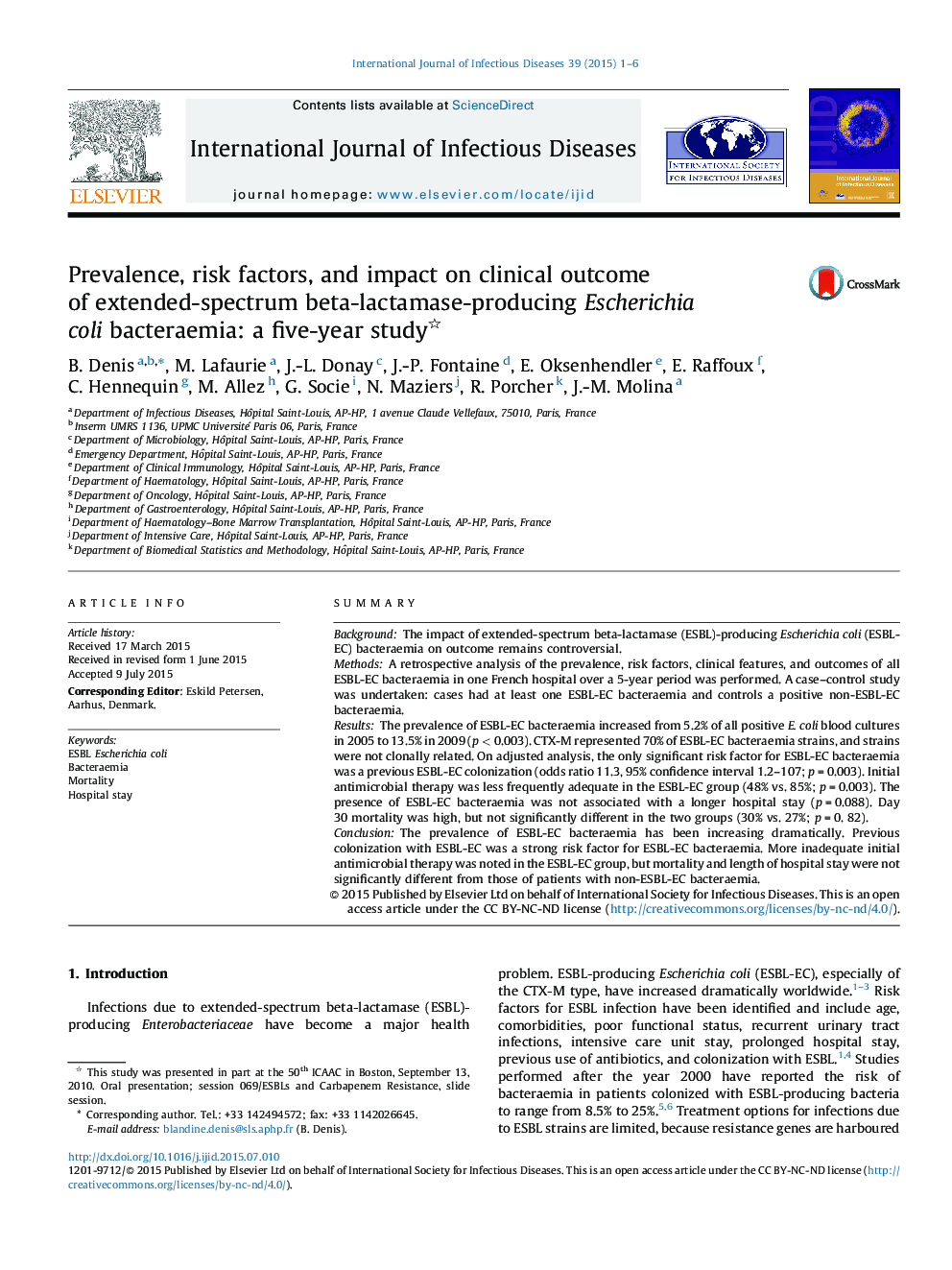| Article ID | Journal | Published Year | Pages | File Type |
|---|---|---|---|---|
| 3362017 | International Journal of Infectious Diseases | 2015 | 6 Pages |
•The prevalence and impact of ESBL Escherichia coli bacteraemia was investigated, with a focus on patients with haematological diseases.•A dramatic increase in the prevalence of ESBL-EC bacteraemia was identified.•On multivariate analysis, a risk factor for ESBL-EC bacteraemia was found to be previous ESBL-EC colonization.•ESBL-EC bacteraemia was not associated with a prolonged length of hospital stay.•Despite more inadequate initial antimicrobial treatment, mortality was not significantly increased.
SummaryBackgroundThe impact of extended-spectrum beta-lactamase (ESBL)-producing Escherichia coli (ESBL-EC) bacteraemia on outcome remains controversial.MethodsA retrospective analysis of the prevalence, risk factors, clinical features, and outcomes of all ESBL-EC bacteraemia in one French hospital over a 5-year period was performed. A case–control study was undertaken: cases had at least one ESBL-EC bacteraemia and controls a positive non-ESBL-EC bacteraemia.ResultsThe prevalence of ESBL-EC bacteraemia increased from 5.2% of all positive E. coli blood cultures in 2005 to 13.5% in 2009 (p < 0.003). CTX-M represented 70% of ESBL-EC bacteraemia strains, and strains were not clonally related. On adjusted analysis, the only significant risk factor for ESBL-EC bacteraemia was a previous ESBL-EC colonization (odds ratio 11.3, 95% confidence interval 1.2–107; p = 0.003). Initial antimicrobial therapy was less frequently adequate in the ESBL-EC group (48% vs. 85%; p = 0.003). The presence of ESBL-EC bacteraemia was not associated with a longer hospital stay (p = 0.088). Day 30 mortality was high, but not significantly different in the two groups (30% vs. 27%; p = 0. 82).ConclusionThe prevalence of ESBL-EC bacteraemia has been increasing dramatically. Previous colonization with ESBL-EC was a strong risk factor for ESBL-EC bacteraemia. More inadequate initial antimicrobial therapy was noted in the ESBL-EC group, but mortality and length of hospital stay were not significantly different from those of patients with non-ESBL-EC bacteraemia.
Graphical abstractFigure optionsDownload full-size imageDownload high-quality image (89 K)Download as PowerPoint slide
